Results 9,151 to 9,160 of 12096
Thread: Anandtech News
-
02-08-19, 02:09 PM #9151
Anandtech: SMIC To Start 14nm Mass Production in H1 2019
Reports have emerged this week that SMIC, the largest foundry in China, is set to start mass production using its in-house developed 14 nm FinFET manufacturing technology in the first half of this year. Notably, this comes at least a couple of quarters earlier than was initially expected, indicating that SMIC is apparently ahead of schedule. Meanwhile the company is already working on its post-14nm processes, as development of its 10 nm and EUV-enabled 7 nm fabrication processes are currently underway.
More...
-
02-11-19, 11:00 AM #9152
Anandtech: The AMD Ryzen 5 2500X and Ryzen 3 2300X CPU Review
Despite AMDs resurgence to kick it with the high end of mainstream processors, the biggest volume sales occur more in the mid-range where the parts are often competitively priced. In the segment, AMD currently has the Ryzen 5 2600 and the 2400G at retail, but OEMs can use two others: the 2500X and the 2300X. We don't know if we'll ever see these at retail, but we obtained both CPUs for a review.
More...
-
02-12-19, 10:19 AM #9153
Anandtech: Tiny at $200: ASUS Z390-I Gaming vs. ASRock Z390 Gaming-ITX/ac Review
With the popularity of small form factor systems ever increasing, today we reviewing two of the most attractive and high-end mini-ITX motherboards on the Z390 chipset which sit happily in an optimum price bracket. Both the ASUS ROG Strix Z390-I Gaming and the ASRock Z390 Phantom Gaming-ITX/ac are around the $200 mark, which is a very popular enthusiast price point for small form factor high powered motherboards. Both motherboards also share similar features, including dual M.2 slots for storage and 802.11ac Wave 2 Wi-Fi modules. Nonetheless, there are differences between the two worth examining.
More...
-
02-12-19, 10:19 AM #9154
Anandtech: AMD Releases Radeon Pro Software for Enterprise 19.Q1: Adds Limited Suppor
This week, AMD released their Radeon Pro Software for Enterprise 19.Q1 WHQL.
Headlining this release, on the heels of the launch of the prosumer-oriented Radeon VII, AMD is introducing Radeon Pro Software compatibility for many of their consumer parts. Under the program, certain Radeon consumer cards, including R5 300, R7, and RX series products will be able to install the Radeon Pro drivers. These products, in turn will be able to access certain professional features of the Radeon Pro drivers, but lack the all-critical certifications and optimizations that typically set the Pro drivers apart. Meanwhile for the new Radeon VII, AMD has announced that support is due soon, but isn't available at lanch.
More on enterprise matters, similar to the continual push for day-0 video game support in AMD's regular Radeon Software, the company is stressing their efforts in day-0 ISV certification for professional applications. By AMD’s count, 431 application/OS/device configuration certifications are included in 19.Q1, largely covering the Radeon Pro WX series but also some FirePro cards as well. AMD also cites year-over-year improvements in CAD/workstation software, as seen in SPECviewperf 13 performance increases over Radeon Pro Software Enterprise Edition 18.Q1.
19.Q1 additionally improves AMD Remote Workstation to fully support Citrix Virtual Apps and Desktops, as well as bringing support for workstation wireless VR in Unreal Studio and SolidWorks eDrawings. This quarterly release also integrates Virtual Super Resolution into a professional feature called Radeon Pro Image Boost, which looks to improve image quality by scaling down an image rendered at higher than native resolution (up to 5K).
And lastly on their eGPU technology, AMD XConnect with Radeon ProRender support allows acceleration by both internal GPU and external Radeon Pro GPU for certain configurations.
Bugfixes and Resolved Issues
As expected, 19.Q1 also comes with fixes for the following issues:
- Some color corruption issues seen in Adobe Premiere Pro with 10 bit pixel format
- Flashing corruption issues with Adobe Photoshop
- Issues with video playback with 10 bit pixel format
- Radeon Pro Settings does not launch after driver install
- "No AMD graphics driver is installed" popup error on switching from Gaming Mode to Professional Mode
Known Issues
AMD notes that Multi-GPU Eyefinity Pro on Windows 10 is only currently supported on the Radeon Pro WX 7100.
- Some display issues may be observed While switching to latest drivers of gaming/professional mode
- Applications using DOPP may experience some issues with Display Overlap enabled
- Some rendering issues may be observed in a multi-display scenario with VMware while hot plugging
- Users may encounter issues when creating compute intensive explosions with previous generation AMD FirePro products in Houdini
The updated drivers for AMD’s professional workstation GPUs are available online at the AMD’s professional graphics driver download page. More information on this update and further issues can be found in the Radeon Pro Software for Enterprise 19.Q1 summary notes, as well as full release notes.
More...
-
02-12-19, 01:49 PM #9155
Anandtech: Cosemi Launches USB 3.1 Gen 2 Hybrid Active Optical Cable: Up to 50 Meters
Cosemi has introduced the industry’s first USB 3.1 Gen 2 hybrid active optical cables (hAOC), which enable USB connectivity over distances upwards of 50 meters. The cables will be available with various connectors and therefore will be able to address various applications.
As you might guess from the name, Cosemi’s USB 3.1 Gen 2 hybrid active optical cables use fiber optics for data transfers, which is further paired with copper wires for control and power. The data portion of the cable is fully USB SuperSpeed+ capable, meaning it can transfer 10Gbps in each direction. Notable, since hAOCs can power themselves, unlike other solutions they do not need any extension boxes or repeaters, making them simpler and more reliable. Using fiber for the data channel also means that the cables are more resistant against EM and RF interference, which is particularly important for medical applications.
The manufacturer plans to offer hAOCs with various types of connectors, including USB Type-A to USB Type-A, USB Type-A to USB Type-C, as well as USB Type-C to USB Type-C, with A-to-C cables being the first type out the door. And while the cables are best geared for high bandwidth applications, like copper USB 3.1 Gen 2 cables, the hybrid active optical cables are backwards compatible with the USB 2.0 spec.
Last but not least, it's interesting to note that Cosemi’s hAOCs do not use PVC. As it turns out, this is a requirement for in-wall cables in the Americas, EMEA and Asia, as PVC produces toxic smoke when it burns.
Cosemi’s USB 3.1 Gen 2 hybrid active optical cables are sampling today, and mass production is set to start in March. The devices will be available later this year from various Cosemi’s partners, including Amazon, Liberty AV Solutions, and other. The manufacturer is not setting an MSRP quite yet, but tells us to expect them to be “competitive to USB extension box solutions.”
Related Reading:
Source: Cosemi
More...
-
02-12-19, 01:49 PM #9156
Anandtech: Corsair 192 GB DDR4 kits for W-3175X Listed Online: Up to $3000
Corsair has released a range of 192 GB DDR4 kits to complement the workstation-focused Intel Xeon W-3175X processor which features 28 cores. The top kit from the new line-up Corsair Vengeance LPX 192 GB operates at DDR4-4000 with a latency of CL19 and has a price tag of $3000.
Using its characteristic heatsink design, Corsair has equipped its 192 GB kits with the Vengeance LPX low profile heat spreaders which are constructed with anodized aluminum and feature an all-black design. Each kit comes supplied with two Vengeance Airflow cooling systems catering for both sides of the ROG Dominus Extreme motherboard; this is the only motherboard that supports the Intel Xeon W-3175X at present.
The four kits available are rated at DDR4-2666 CL16, DDR4-3200 CL16, DDR4-3600 CL18, and DDR4-4000 CL19. Each 192 GB kit consists of twelve 16 GB sticks which operate in hexa-channel mode on the Xeon W-3175X and other LGA3647 CPUs that allow for UDIMM operation. On the DDR4-2666 kit, the operating voltage is at 1.20 V, with the faster kits requiring 1.35 V to run at their rated specifications.
The four Corsair Vengeance LPX kits are available for purchase directly from the Corsair Store, with each kit occupying a different price point. The cheapest 192 GB kit is the DDR4-2666 CL16 with a cost $1585, while the next fastest, the DDR4-3200 CL has an MSRP of $1720. Moving up to the DDR4-3600 CL18 kit, it costs $2320 and unsurprisingly, the DDR4-4000 CL19 kit is the most expensive with a mouth-watering price tag of $3000.Corsair Vengeance LPX 192 GB Kits for Intel Xeon W-3175X Speed CL Timing Voltage Kit
Config.PN MSRP
(USD)DDR4-2666 CL16 18-18-35 1.20 V 12×16 GB CMK192GX4M12P2666C16 $1585 DDR4-3200 CL16 18-18-36 1.35 V CMK192GX4M12P3200C16 $1720 DDR4-3600 CL18 19-19-39 CMK192GX4M12P3600C18 $2320 DDR4-4000 CL19 23-23-45 CMK192GX4M12P4000C19 $3000
All four kits on Corsair's website are currently listed as 'notify me when in stock', so it will be interesting so see when they will be in stock and how many units will be available.
Related Reading- The Intel Xeon W-3175X Review: 28 Unlocked Cores, $2999
- Intel 28-Core Xeon W-3175X Spotted at Retail in Japan: $3880
- Asetek Launches 690LX-PN Cooler for Xeon W-3175X: Up to 500 W
- G.Skill Unveils Trident Z Royal Hexa-Channel 192 GB DDR4-4000 Kit for Xeon W-3175X
More...
-
02-13-19, 10:14 AM #9157
Anandtech: Advantech Unveils 32 GB SQRAM DDR4 DIMMs for HPC
Advantech, a maker of server-grade memory, storage, and other components and solutions, is introducing a new lineup of 32 GB unbuffered DDR4 memory modules. Designed for high-performance computing (HPC) applications, the SQRAM-brand DIMMs use the latest DDR4 DRAM devices from Samsung, and feature additional reinforcements to make them suitable for industrial applications.
Advantech’s SQRAM 32 GB DDR4 modules are based on Samsung’s 16 Gb DDR4-2666 memory chips. Given their positioning, they enable system makers to easily install 64 GB of memory into machines with two memory slots or 128 GB of memory into machines with four memory slots, twice what's possible with today's common 16 GB DIMMs. Advantech's modules come in ECC Unbuffered DIMMs, Unbuffered SO-DIMM, ECC SO-DIMM, and Rugged DIMM form-factors.
Along with class-leading capacity for an unbuffered DIMM, Advantech’s SQRAM-brand memory modules are also aimed at applications that require high long-term reliability. In particular, they're rated to withstand extreme temperature ranges (between -40°C and +85°C or between 0°C and +85°C), and they feature 30u micron thick golden connectors for extra reliability. The modules also come equipped with a heatsink and are supported by the company’s SQRAM Manager utility to monitor DRAM temperature and alert about overheating.Advantech's SQRAM DDR4-2666 Lineup Family Capacity Form-Factor Temperatures SQR-SD4N
SQR-SD4I4 GB - 32 GB Unbuffered
SO-DIMM0~85?
-40~85?SQR-SD4N/I (ECC) ECC SO-DIMM 0~85?
-40~85?SQR-UD4N/I (ECC) ECC Unbuffered DIMM 0~85?
-40~85?SQR-YD4N/I Rugged DIMM 0~85?
-40~85?
Advantech will start sales of its 32 GB SQRAM DDR4-2666 memory modules in the near future. The company hasn't announced any official prices at this time, but as both high-capacity and industrial-grade DIMMs, they are very much high-end parts and will undoubtedly be priced accordingly.
Related Reading:
- Double Height, Double Capacity DDR4? ZADAK's New 32 GB UDIMMs
- Samsung Unveils 32 GB DDR4-2666 SO-DIMMs
- Samsung Adds 32 GB UDIMMs to Memory Lineup
- ASUS Z390 Platforms Now Support 128 GB of Memory
- GIGABYTE Adds Support for 128 GB of Memory to Z390 & C246 Motherboards
- Double Height DDR4: 32GB Modules from G.Skill and ZADAK Reviewed
Source: Advantech
More...
-
02-13-19, 10:14 AM #9158
Anandtech: Exploring Thunderbolt 3 eGFX Performance, Feat. PowerColor's Gaming Statio
Thunderbolt 3 has enabled a number of interesting use-cases that were simply not possible with earlier high-speed external interfaces. The technology allows for four lanes of PCIe 3.0 to become available over a USB Type-C interface, which can be further combined with power, DisplayPort video, and other forms of data. As a result, one of the most prominent use-cases for Thunderbolt 3 has been using it to attach an external GPU. DIY enthusiasts have previously tried this with Thunderbolt 2 enclosures, but, there was no official support from the vendors. This changed with Thunderbolt 3 and the creation of an official eGFX standard.
These days, a number of eGFX enclosures are already available in the market. For today's review we're taking a look at PowerColor's Gaming Station eGFX enclosure and their Radeon RX Vega 56 Nano GPU. Along with looking at the eGFX setup itself, we're also using the chance to take a look at identifying how the performance of the same eGFX solution can vary across systems with different capabilities, to give us an idea of how much the host system influences performance versus GPU or bandwidth bottlenecks.
More...
-
02-13-19, 12:39 PM #9159
Anandtech: Samsung's 2019 QLED UHD TVs: 8K TVs Revamped, 4K TVs Get New Panel & Backl
Samsung this week formally introduced its 2019 Ultra-HD TV family. The new high-end televisions from Samsung all feature QLED backlighting and compared to their 2018 predecessors, have received audio and video quality enhancements. Select models will also get AMD’s FreeSync variable refresh rate tech along with Samsung's Game Motion Plus tech to remove blur and judder in fast-paced scenes. Finally, along with the new hardware, all of the new Smart TVs (as well as those launched in 2018) will receive the iTunes Movies & TV Shows app and Apple AirPlay 2 support (as reported), along with the new Universal Guide that is designed to allow users to discover content more quickly.
Samsung Q900: 8K King of the Hill
Samsung’s Q900 series will remain the company’s top-of-the-range lineup, offering an 8K (7680×4320) resolution and coming in 65, 75, 82, 85, and 98-inch sizes. This year’s Samsung Q900-series televisions will be based on a version of the Quantum Processor 8K (briefly described last year) that not only upscales content to an 8K res, but optimizes “audio and video to the specific content” as well as tailors audio settings for the particular environment.
Samsung QLED 4K: Premium UHD TVs Get Better
At the 4K level, Samsung’s premium Q90 and Q80 lineups of 4K Ultra-HD TVs will get new panels, which are said to feature wider viewing angles (which the maker does not quantify), less glare, and better color reproduction. The latter would appear to be courtesy of a revamped backlighting system featuring quantum dots, as well as precision-controlled LEDs to enhance contrasts, which along with the Q90 and Q80 series TVs, will also be coming to the Q70 series.
Meanwhile, starting with this year's models, Samsung’s QLED 4K TVs will be powered by the Quantum Processor 4K that upscales content to a 3840×2160 resolution and enhances its quality through various other algorithms.
Samsung QLED Lifestyle 4K: Ultra HD with Style
For customers who not only want a QLED-based Ultra-HD television but also want a completely different take on how those TVs should be styled, Samsung is rolling out its QLED Lifestyle 4K lineup. This consists of The Frame and The Serif models, where the former support interchangeable bezels (sold separately), and the latter is equipped with a stylish “post-modern” frame. Both can display various works of art that can be obtained from Samsung’s Art Store in Ambient Mode (that is supported by all of Samsung’s QLED 4K TVs).
4K UHD RU: Pure 4K
Last but not least, Samsung will also keep offering 4K Ultra-HD TVs without quantum dot-enhanced backlighting. The RU8000-series televisions will come in 49, 55, 65, 75, and 82-inch sizes, whereas the cheaper RU7100-series will feature 43, 49, 55, 58, 65, and 75-inch diagonals. Interestingly, the company will offer only two curved 4K models: the R7300-series in 55 and 65-inch sizes.
Ultra Large TVs Gain PopularitySamsung's 2019 4K and 8K UHD TVs Lineup Product Series Sizes Processor Distinctive Features QLED 8K Q900
65”, 75”, 82”, 85”, 98”Quantum Processor 8K (2019 version?) 8K, new SoC QLED 4K Q90
65”, 75”, 82”Quantum Processor 4K Ultra Viewing Angle: reduces glare and enhances color.
Direct Full Array: enhances contrast with precision-controlled LED backlightingQ80
55”, 65”, 75”, 82”Q70
49”, 55”, 65”, 75”, 82”Direct Full Array: enhances contrast with precision-controlled LED backlighting Q60
43”, 49”, 55”, 65”, 75”, 82”? QLED Lifestyle 4K The Frame
43”, 49”, 55”, 65”Interchangeable bezels, Samsung Art Store The Serif
55”A bold, post-modern design 4K UHD RU RU8000
49”, 55”, 65”, 75”, 82”? ? R7300
55”, 65”Curved RU7100
43”, 49”, 55”, 58”, 65”, 75”?
One of the things that catches our eyes with Samsung’s 2019 Ultra-HD TV lineup is the number of ultra-large displays, which measure 75 inches and higher. According to Samsung, which cites data from IHS Markit, there were 2.1 million 75-inch+ TVs sold in 2018. Furthermore, the market for such devices is expected to grow by 43% this year to 3 million units, before reaching 5.8 million units in 2022. As a result, with their latest generation of TVs Samsung is looking to capitalize on the demand for such large televisions by offering more ultra-large models than ever before.
Related Reading:
- Samsung at CES 2019: 219-Inch and 75-Inch Micro LED Ultra-HD TVs Demonstrated
- Samsung Announces iTunes Movie & TV Show Support In Its 2018, 2019 Smart TVs
- Samsung Begins Sales of 65-Inch Q900R 8K UHDTV in the UK
- Samsung Starts to Take Pre-Orders on 85-Inch Q900 8K UHDTV
Source: Samsung
More...
-
02-13-19, 03:46 PM #9160
Anandtech: Intel Submits Ireland Fab Expansion Plan: $8 Billion Price Tag, With a 4 Y
Intel has submitted a proposal to Irish authorities for the expansion of its manufacturing site near Leixlip. According to the plans, Intel is exploring the construction of a brand-new building – one larger than their previously proposal – which in particular strongly hints that the chipmaker would be installing EUV lithography equipment.
Intel originally received permission to build its new fab on the west-side of its Leixlip campus back in 2017. However the company never began construction, as it did not have a strategic plan in place for boosting manufacturing capacities. Last year the company formally decided to significantly boost its manufacturing capacities by building new fabs in Oregon, Ireland, and Israel, as well as to furnish its Fab 42 in Arizona. These expansions are being undertaken in a bid to ramp up Intel's capacity for their forthcoming 7 nm process, which relies on a combination of DUV and EUV lithography tools. But first, Intel needs to get permission from the local authorities, which is why it recently submitted its plans to Kildare County Council and was picked up by a local newspaper.
The proposed fab will reportedly take four years to build and will cost Intel around $8 billion. The company expects that the new production facility will employ 1600 people after it becomes fully operational. Importantly, this long cycle means that even if Intel started this year (and they likely won't), the fab would not be completed until 2023. So it's widely expected that Intel would be preparing the fab for 7 nm EUV, if not a more advanced manufacturing process. This new fab would in turn be joining Intel’s existing fab in Leixlip, which currently makes chips using the company’s 14 nm process technology.
Now that Intel has formally submitted its expansion plans to local authorities, it will take the latter some time to approve it. Therefore, according to the local media, Intel would start any actual construction “over the next year or so”. This, of course, is assuming the plan even makes it that far; the formal submission of the plan does not mean that Intel will build the fab, as the company's intentions tend to change with the market. While Intel has a roadmap for its global manufacturing network expansion, it still needs approval from local authorities before the company can commit money to the project.
Alll told, the Irish fab is the latest in a series of fab plans from Intel. Besides the four fabs in Arizona, Ireland, Israel, and Oregon, Intel is also in talks to build another $11 billion fab in Israel.
Related Reading:
- Intel Details Plans for Its Oregon Fab Expansion: D1X Phase 3
- Intel to Expand Production Capacities at Multiple Fabs
- Intel Considers $11 Billion Fab in Israel
- Israeli Parliament Approves Intel Fab 28 Expansion Grant
- Intel: EUV-Enabled 7nm Process Tech is on Track
- ASML to Ship 30 EUV Scanners in 2019: Faster EUV Tools Coming
Sources: Intel, Intel, The Irish Times
More...
Thread Information
Users Browsing this Thread
There are currently 55 users browsing this thread. (0 members and 55 guests)





 Quote
Quote
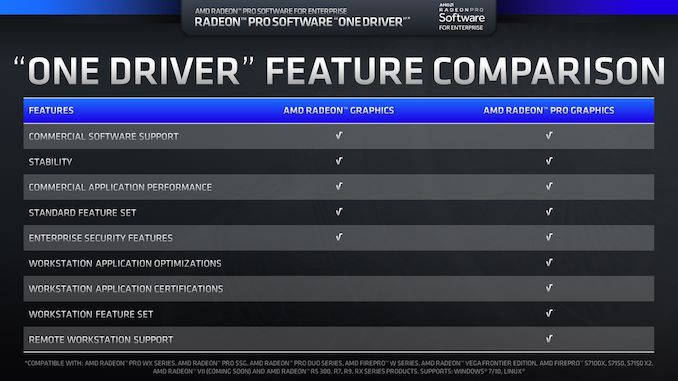

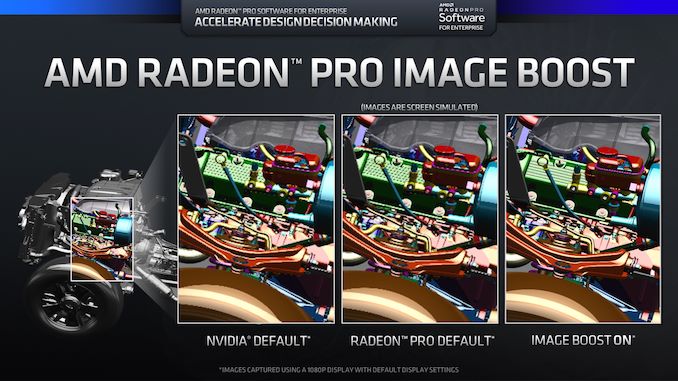
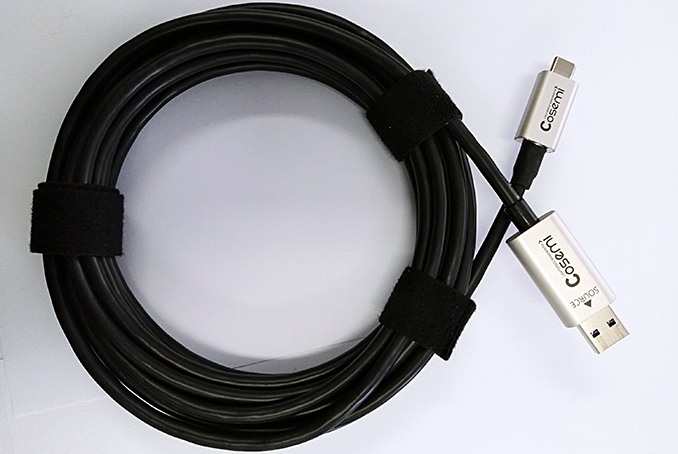
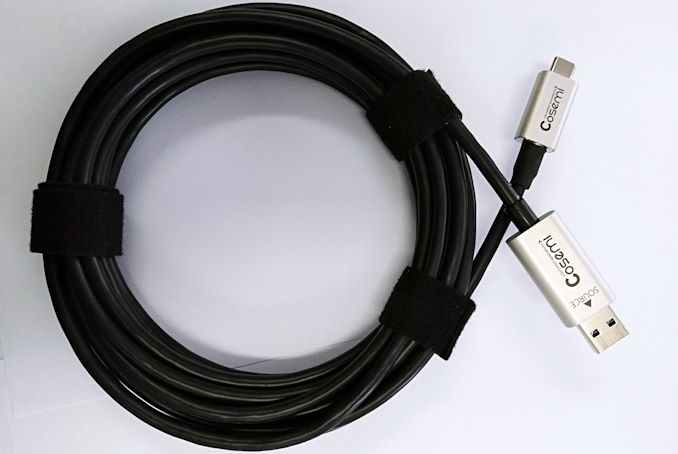
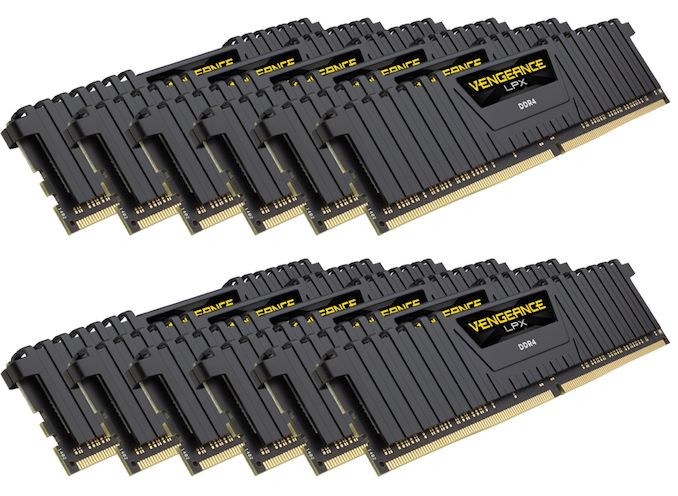
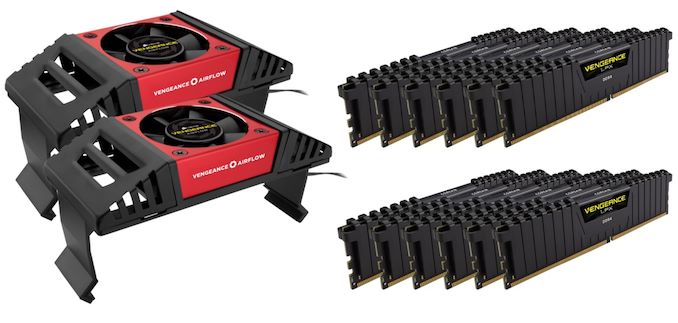
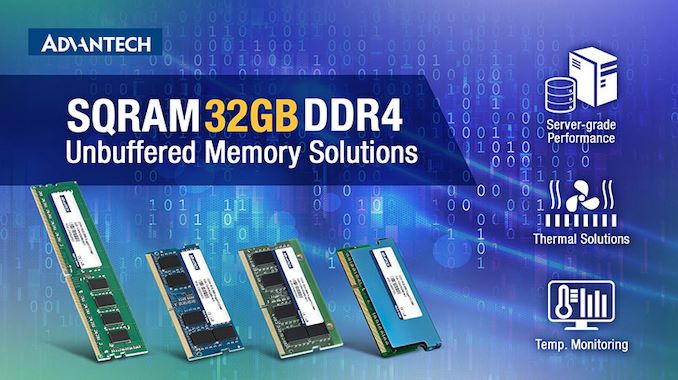
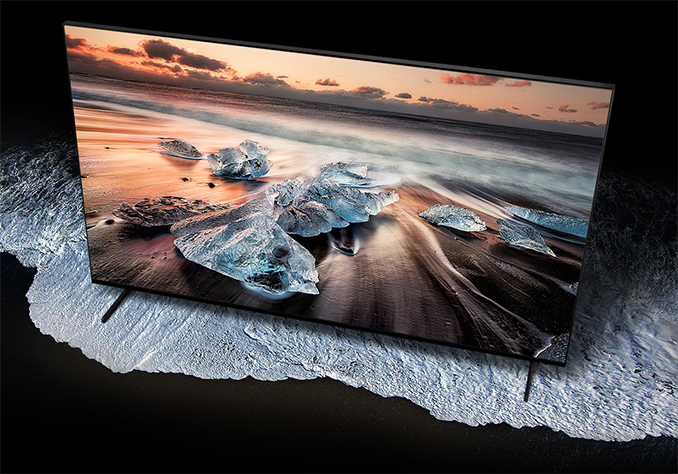


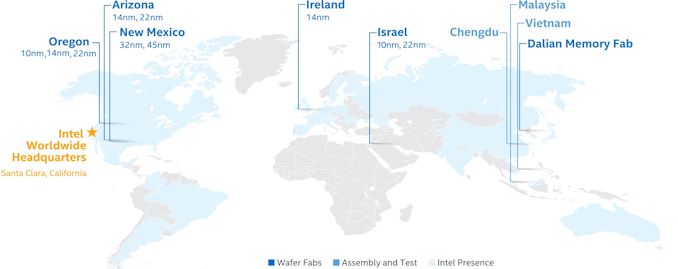
















Bookmarks